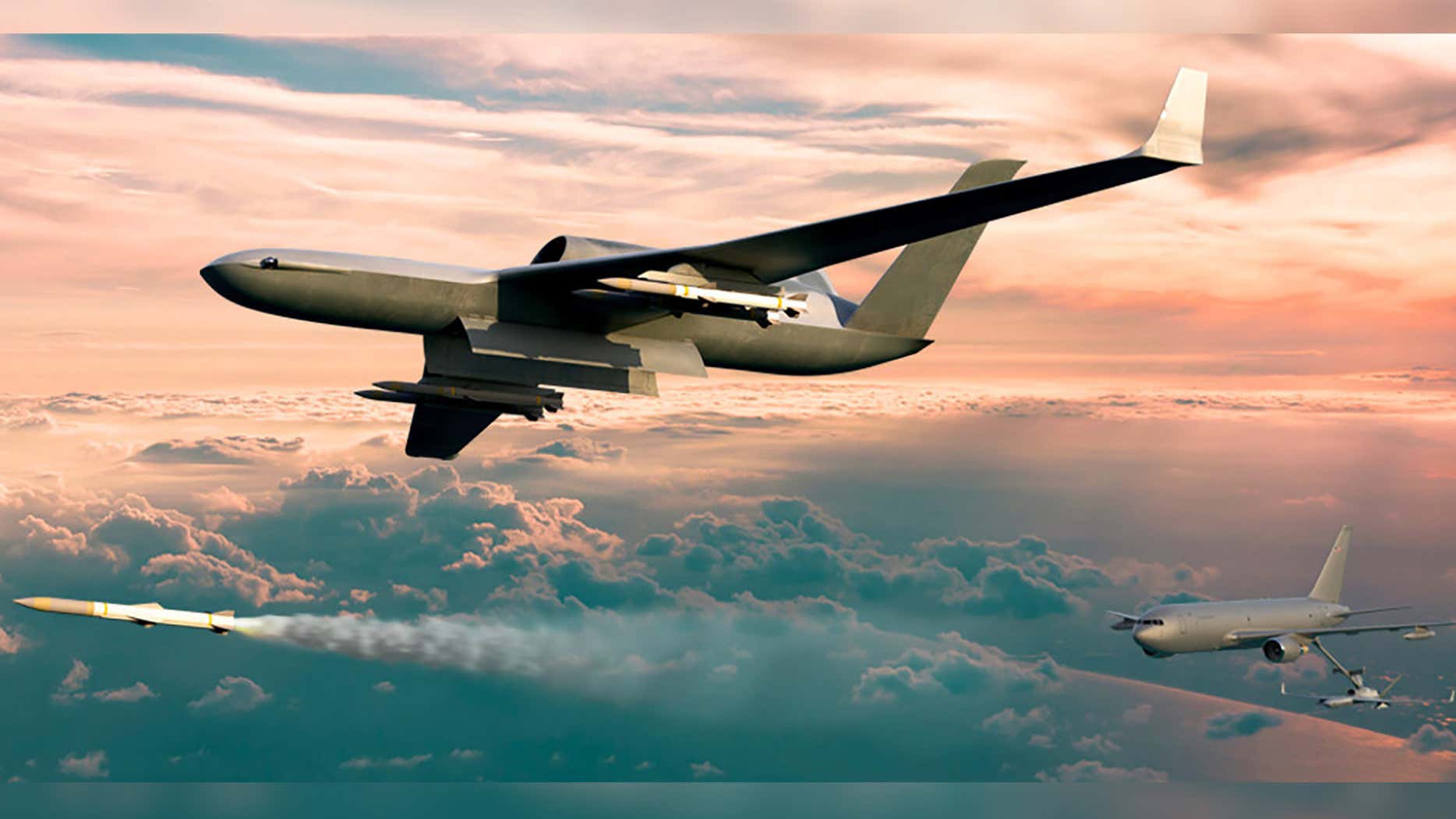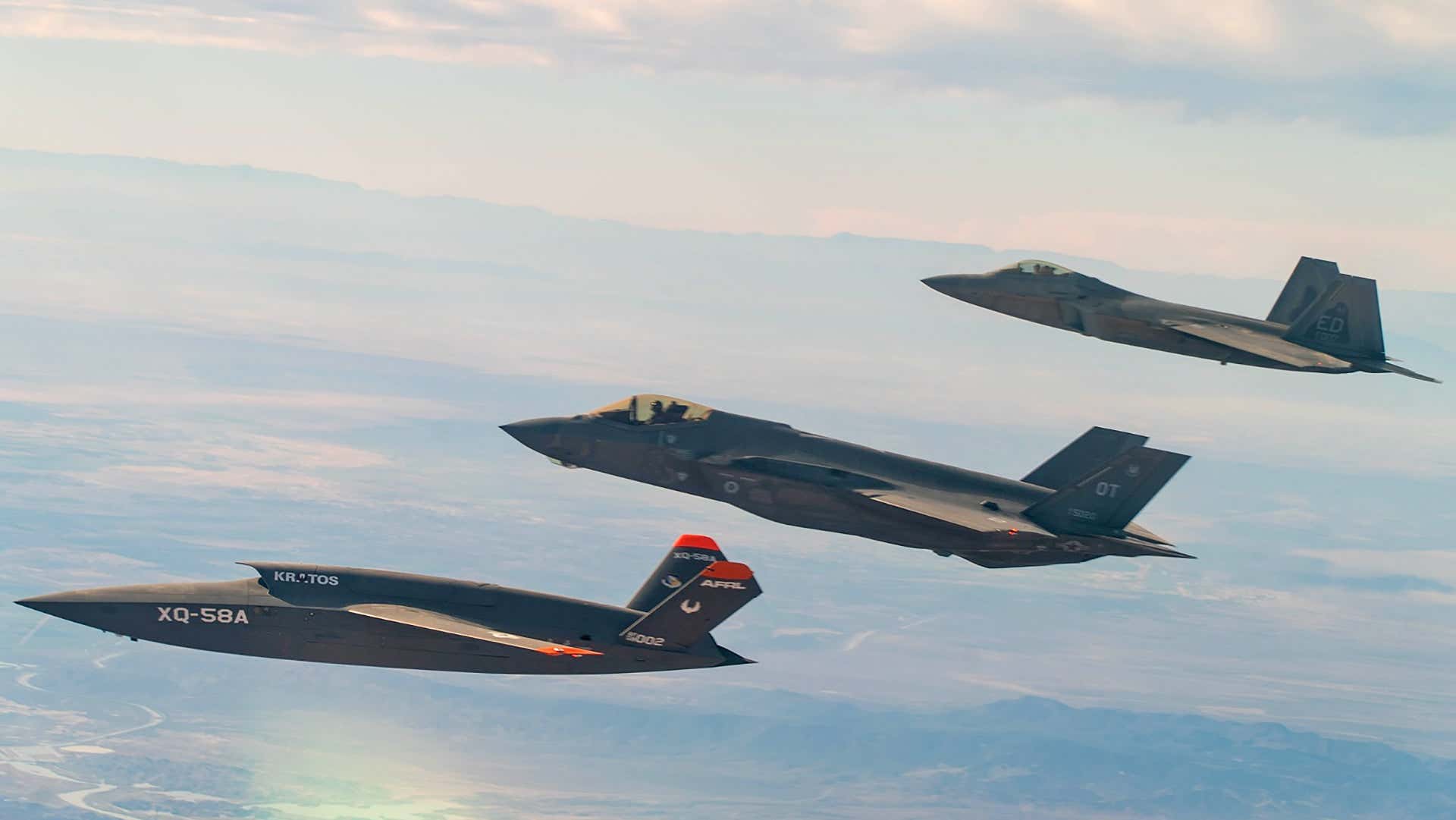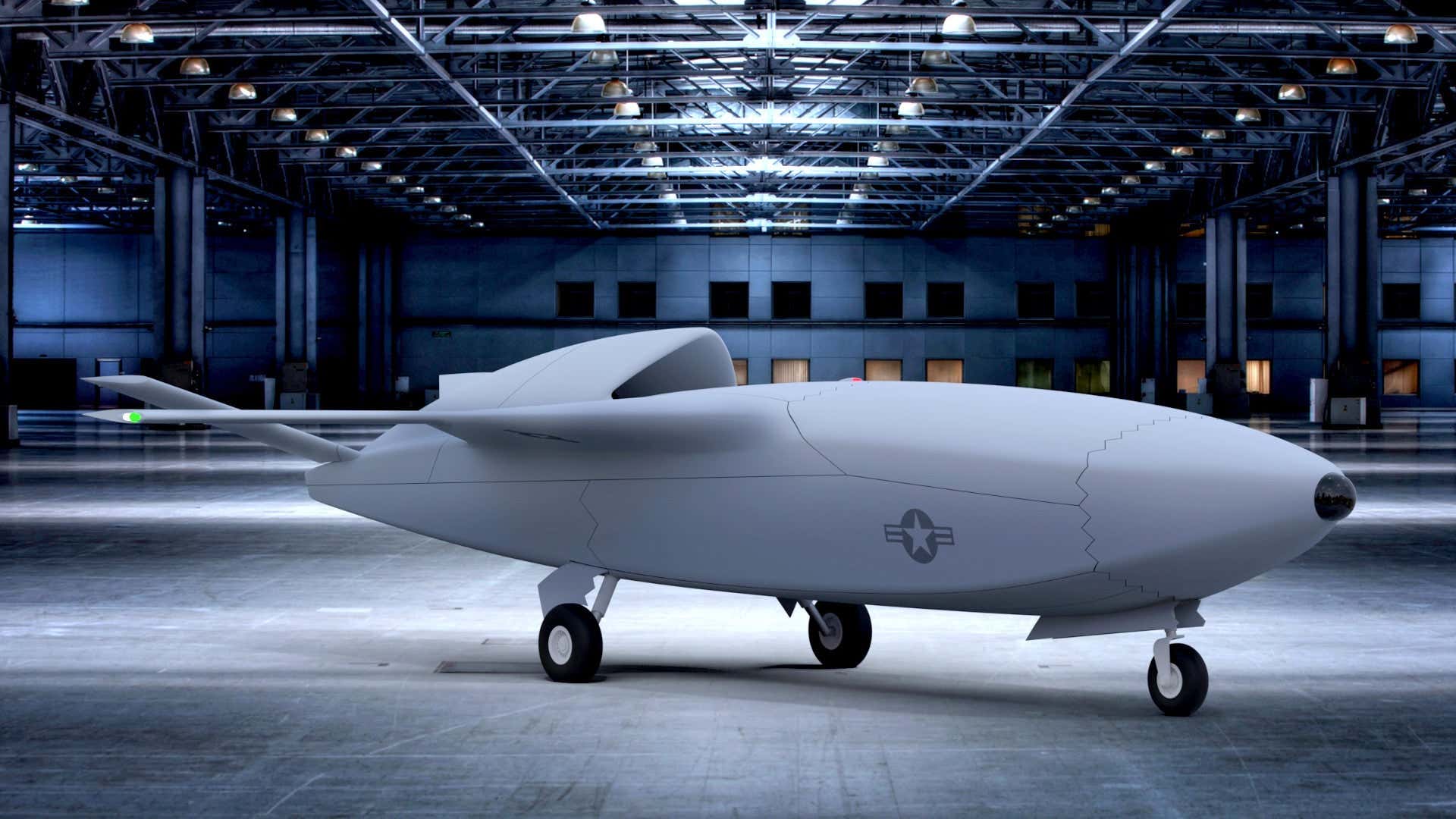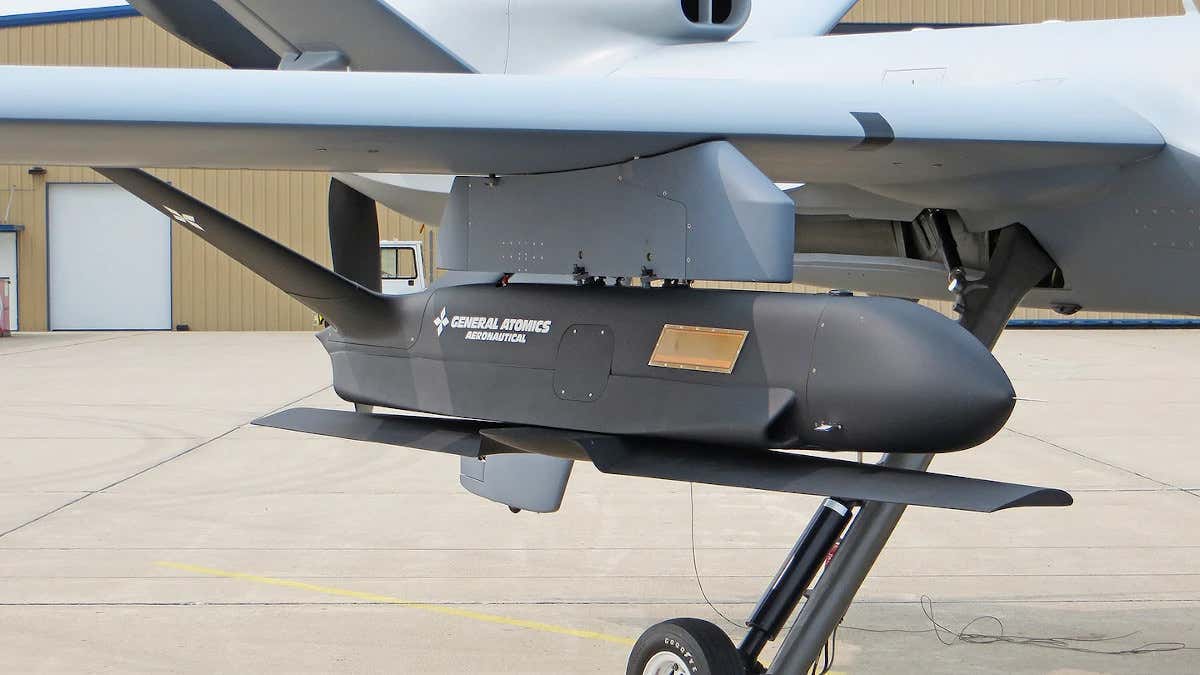
Check Out The Mystery Drone Model On The Desk Of This General Atomics Executive
When it comes to unmanned aircraft, there is seemingly no shortage of new and cutting-edge projects and programs. As well as actual drones that are being built or tested, there are reams of studies, works in progress, and more hypothetical concepts in this game-changing arena. That said, once in a while, an artist’s study or model crops up which takes us somewhat by surprise. Case in point, a pair of desktop models in the office of a General Atomics Aeronautical Systems executive that Steve Trimble, Aviation Week’s Defense Editor and a friend of The War Zone, spotted today. The company later confirmed they show an undisclosed prototype combat drone and a precursor to the Sparrowhawk — a weapon-carrying air-launched drone, itself designed for launch from drones.
Trimble took a screenshot of a virtual panel appearance by Michael Atwood, General Atomics Aeronautical Systems’ (GA-ASI) senior director for advanced programs, during the Air Force Association’s Virtual Aerospace Warfare Symposium today. Atwood's LinkedIn profile describes him as “Responsible for technical oversight of the aircraft design and development. In addition, Mr. Atwood oversees the internal company development of advanced aircraft technologies.” Furthermore, he is “Comfortable and capable dealing with the most complex emerging technologies — including low observables, advanced composite aircraft structures, Electronic Warfare (EW), data-link communication and modern aviation weapons systems.”

Another GA-ASI combat drone concept, this time for the Defender,
that is designed for air-to-air combat, is capable of mid-air
refueling, and has a primary task of defending high-value and largely
defenseless assets, like tankers.
Atwood had been taking part in a panel with the title Mission Domain Live Engagement — Digital Engineering/Advanced Manufacturing, but what caught Trimble’s interest was what was visible behind Atwood, at what appeared to be his workspace. Alongside an assortment of patches, a Pratt & Whitney mug, and a stack of paperwork were two desktop models of drones, neither of which was immediately identifiable. That immediately raised a whole bunch of interesting questions. Were these models prepared for some ongoing or upcoming drone program that we already know about, or were they something else?
Meanwhile, on Twitter, C. Mark Brinkley, a GA-ASI spokesperson, responded, confirming that what we can see on the left of the screenshot is a “prototype model for a UCAV system.”
To some, the design may seem reminiscent of the Kratos XQ-58A Valkyrie stealthy unmanned combat aircraft, used recently as a potentially ground-breaking data-fusion and relay gateway between U.S. Air Force F-22 Raptors and F-35A Joint Strike Fighters. While it shares some visual similarities with the Valkyrie, it is also quite different.

A Kratos XQ-58A Valkyrie flies with a U.S. Air Force F-22A Raptor and F-35A Lightning II.
The model — which features a prominent recessed air intake on the upper side of the fuselage — could be GA-ASI’s concept for either the Low-Cost Attritable Aircraft Platform Sharing (LCAAPS) or for Skyborg. LCAAPS is an Air Force Research Laboratory (AFRL) program focused on developing low-cost avionics, electrical systems, and airframes for drones, including different wings, tails, and even engines that could be rapidly refitted depending on the particular mission.
Skyborg, for its part, is a wider Air Force Strategy Development Planning Experimentation initiative that aims to demonstrate how combat drones can be used autonomously and collaboratively to defend high-value aircraft such as aerial refueling tankers and E-3 AWACS. Last December, GA-ASI was one of three companies — alongside Boeing and Kratos Unmanned Aerial Systems — to receive contract awards to build prototype drones that will carry the Skyborg

A Skyborg conceptual design for a low-cost Unmanned Combat Aerial Vehicle (UCAV)
Trimble himself told The War Zone that he thinks the Valkyrie-looking model on the left could be a GA-ASI concept for LCAAPS or Skyborg, but that it was also possible that those designs were the same: think LCAAPS and Skyborg. As for the comment from GA-ASI’s Brinkley, that, of course, could imply LCAAPS and/or Skyborg.
The War Zone's editor, Tyler Rogoway, thinks it could also be a more advanced concept that is larger in size, such as for a more traditional UCAV. It is quite similar in configuration to Boeing's Naval UCAV concept that ended up morphing into the MQ-25 Demonstrator. As such, this could be General Atomic's take on the defunct Unmanned Carrier-Launched Airborne Surveillance and Strike (UCLASS) program from which Boeing's MQ-25 demonstrator emerged. It could also be part of another UCAV effort that remains undisclosed.
Turning to the other model, on the right of the image, and partially obscured by Atwood himself, this is in two parts, one atop the other, depicting a pylon with an attached drone.
“Early prototype for an innovative and disruptive airborne recovery system. Grows up to become Sparrowhawk,” was Brinkley’s explanation.
The GA-ASI Sparrowhawk is a weapon-carrying air-launched drone, which recently began captive carry tests in a demonstrator form, as we reported here. This small drone is intended to be launched and recovered in flight, by another drone, rather than a manned aircraft. The company says that Sparrowhawk was specifically designed to work with other larger unmanned aircraft that it builds, such as the MQ-9 Reaper and MQ-1C Gray Eagle, offering an important stepping stone to all-new capabilities on those existing designs, as well as future ones.

Sparrowhawk under the wing of an MQ-9 Reaper drone.
Meanwhile, the origins of today’s Sparrowhawk lie in a previous design that GA-ASI had submitted for the Defense Advanced Research Projects Agency's (DARPA) Gremlins program, which aims to demonstrate the ability to launch and recovery a low-cost swarm of cruise missile-like drones in mid-air.
That at least clarifies what one of the desktop models depicts. We will provide updates if and when we receive confirmation of what the other model actually represents. In the meantime, we are left to reflect on what is, without doubt, one of the most interesting and fast-paced areas of warfare right now.
Thomas Newdick
No comments:
Post a Comment
Note: Only a member of this blog may post a comment.